- Brian Kruse
- Director, Teacher Learning Center
- An Integrated Approach to Early Elementary Earth and Space Science
- https://astrosociety.org/education-outreach/k-12-science-teachers/project-planet.html
- Astronomical Society of the Pacific
- Kristin Bass
- https://rockman.com/about/team/kristin-bass/
- Senior Research Associate
- An Integrated Approach to Early Elementary Earth and Space Science
- https://astrosociety.org/education-outreach/k-12-science-teachers/project-planet.html
- Rockman et al
- John Erickson
- Planetarium Director
- An Integrated Approach to Early Elementary Earth and Space Science
- https://astrosociety.org/education-outreach/k-12-science-teachers/project-planet.html
- Lawrence Hall of Science, UC Berkeley, University of California Berkeley
- Julia Plummer
- Associate Professor of Education
- An Integrated Approach to Early Elementary Earth and Space Science
- https://astrosociety.org/education-outreach/k-12-science-teachers/project-planet.html
- Pennsylvania State University
- Karen Schwarz
- Assoc Professor
- An Integrated Approach to Early Elementary Earth and Space Science
- https://astrosociety.org/education-outreach/k-12-science-teachers/project-planet.html
- West Chester University
- Linda Shore
- CEO
- An Integrated Approach to Early Elementary Earth and Space Science
- https://astrosociety.org/education-outreach/k-12-science-teachers/project-planet.html
- Astronomical Society of the Pacific
- Theresa Summer
- Astronomy Educator / Diversity Coordinator
- An Integrated Approach to Early Elementary Earth and Space Science
- https://astrosociety.org/education-outreach/k-12-science-teachers/project-planet.html
- Astronomical Society of the Pacific
Public Discussion
Continue the discussion of this presentation on the Multiplex. Go to Multiplex







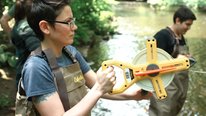
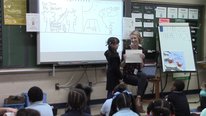
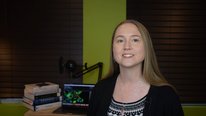
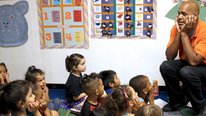
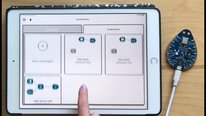
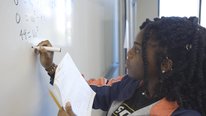
Brian Kruse
Director, Teacher Learning Center
Jeff Winokur
It is exciting to see how you integrate books with the planetarium experience, along with getting students to explore shadows of their own. While we have not yet actively researched the effects of learners' movements in our project, it's our experience that young students learn a great deal by being physically immersed in their learning, particularly about physical phenomena, since they are the ones in control of what is happening and they can repeat these actions a number of times. Learning is also deepened when these physical experiences are coupled with conversations in which students describe, reflect on and try to make sense of what they have observed, so the experience is both hands-on and minds-on.
Julia Plummer
Theresa Summer
Kristin Bass
Senior Research Associate
Hi Jeff,
Thank you so much for your interest in our work, and for sharing your experience with young learners. We agree that it's important not only for students to be physically immersed in their learning, but to make sense of what they've done.
For instance, in the third grade lessons, students sort pictures of the phases of the Moon before and after their visit to the planetarium. In the second card sort, one of the teachers asked students what they did differently. A couple of students mentioned that they changed their order based on what they did in the planetarium. It's interesting to see the ways teachers and students work together to make sense of the phenomena they're investigating!
Krista Woodward
Abigail Levy
Distinguished Scholar
This is really interesting work, and exciting to see what early elementary students can accomplish in science investigations. The planetarium piece seems to play an important role in students' developing understanding. In response to your question about equitable experiences, I'm curious what you're learning about whether and how the materials and experiences you're creating for planetarium and classroom use could be adapted for schools that don't have access to a planetarium.
Thanks very much for sharing your work. I look forward to watching this conversation unfold.
Krista Woodward
Karen Schwarz
Assoc Professor
Hi Abigail - thanks for the post! There's been a good amount of research done with classrooms using computer-based planetarium software (e.g. Starry Night, Stellarium, etc.). It has been shown to help students solidify concepts, although the flat screen format is less "real life" like than being in an actual dome.
Jacqueline Genovesi
Vice President
Thank you for sharing this wonderful project. I appreciate the links between the school and planetarium and literacy and science. Throwing in play and creativity make this an impactful project. When I think about your question on equity I have more questions then answers. What are your concerns with equity? Is there a particular school or group of schools in your area that you feel may not be able to access this work? Does your question have to do with lack of resources? Lack of high quality teachers? I would love more information.
Kristin Bass
Senior Research Associate
Hi Jacqueline,
Thanks for your comments and questions! We're always interested in ways to make astronomical phenomena relevant to students' lives and communities. For example, in the third grade lesson sequence, students read stories about the patterns that different cultures see in the Moon. They then create their own story. Likewise, in the first grade lessons, students read about Moonbear, then create their own shadow story. What other opportunities or suggestions do you or others have for enabling students to bring their diverse ideas and experiences to their investigations?
Jacqueline Genovesi
Vice President
Kristin,
I love how you invite students to create their own stories. In some of the equity work I've been involved in we have read I Know the Moon by Stephen Axel Anderson. It is a great book for understanding that there are different ways of knowing. You just have to be careful that the "truth" is not just held by the "Man of Science" in the book (I know an odd thing for a scientist to say). We have used it to introduce the idea that indigenous/traditional ways of knowing are based on observation and are as valid as Western science. It helps open up conversations about what different families and communities might think about the subject.
Karen Schwarz
Theresa Summer
Brian Kruse
Director, Teacher Learning Center
Thank you Jacqueline for your comments!
Our wish is to allow every student to have a voice, and relate to the phenomenon under investigation in their own way. In so many ways, indigenous ways of knowing are relational in nature, while western science is transactional. It's not so much one is more "right" than the other, they are different approaches to the natural world. We have much to learn from one another, if we are willing to keep our minds open.
Theresa Summer
Rebecca Ellis
This is a really cool and engaging sequence of lessons and activities! Using shadows and the moon as the central phenomenon make the material accessible and relatable to all students, since we all have access to both and many already have an interest in them.
I am curious about the resources needed for the lessons. Will you provide kits to teachers that include the book, the bear, and other cut-outs or will they have to make these resources themselves?
As for students who cannot access a planetarium, I wonder if the increased development into VR goggles might be able to help?
Julia Plummer
Brian Kruse
Director, Teacher Learning Center
Hi Rebecca,
Thank you for visiting our video!
Yes, we are planning to have teaching kits available at some point. Though the resources are easily obtained and/or created.
We have wondered about the best ways for teachers without access to a planetarium could take advantage of a program such as this. VR goggles were not one of the ways we considered, however there are a great many desktop planetarium software offerings available. And, it seems like the numbers of portable domes is increasing across the country.
Kristin Bass
Senior Research Associate
Hi Rebecca,
Thanks for your thoughts and feedback! I agree with Brian that the materials should be easily obtained or created. Moonbear's Shadow is available at most online booksellers. Breakfast Moon was developed with a supplemental NSF grant to the Astronomical Society of the Pacific, and is available through the ASP's website.
The hands-on materials should be as similar to the books as possible. The first grade students liked picking their favorite color of bear, and making shadows with bear and the tree. The flashlight had little "rays" around it to represent the Sun. It remains a question whether those rays were entirely necessary to support their sense making. I don't think it would be that hard for students to create their own construction paper frames to wrap around a flashlight.
As for the VR goggles, that's an interesting idea. It would certainly let students see phenomena like Moon phases closely in an abbreviated time span. I wonder if would make any kids dizzy. I've tried my hand at a few immersive VR games, and while I've done fine, I wonder about kids with more delicate constitutions.
Krista Woodward
Susan Kowalski
Thank you for sharing your work with this video. It's inspiring to see how students can use stories and their experiences on a field trip to enrich their science learning. It makes me wonder why we ever try to teach anything without a compelling story!
Krista Woodward
Julia Plummer
Karen Schwarz
Rita Karl
Brian Kruse
Director, Teacher Learning Center
Thank you Susan for your kind words! I agree, so much of what we do, and remember, has to do with the stories we tell, and create.
Krista Woodward
Kristin Bass
Senior Research Associate
Hi Sue,
I agree! Narratives are powerful tools for engagement and education. It's as true for adults as it is for children. If we've learned anything from our time sheltered in place, it's the power of a good story. Be that local story-readers or national influencers, stories have impacts. May we all remember this as we prepare our next rounds of proposals, reports, and manuscripts!
Krista Woodward
Rita Karl
Hi Kristin and team --
I am so intrigued by your use of narrative and character identification with the first graders to introduce science and astronomy. The power of a compelling story and connection to characters is a terrific hook to the topic (coming from a former librarian!).
We are actually doing a research study on this specific topic for our current computer sceince focused season of SciGirls. I am looking forward to seeing your findings.
Krista Woodward
Karen Schwarz
Kristin Bass
Senior Research Associate
Hi Rita,
So great that we have these interests in common! I look forward to hearing what you find from your SciGirls research. Narratives are powerful, wonderful things.
Albert Byers, Ph.D.
Brian, how awesome to see the efforts you are still advancing in astronomy and space science these so many years since we were at NASA. It looks like excellent work, and I appreciate the melding of the intangible (via technology) with the "real-world" tangible and kinesthetic-based learning. Agreed, students need to experience the phenomena first hand as part of their sense-making. Keep up the outstanding work!
Julia Plummer
Leigh Peake
I loved seeing this video and it has so many connections to our work which also creates a sequence of experiences combining informal and formal learning. We also share a strong focus on narrative and story. I'm curious whether any of your research as been able to tease apart the specific incremental value of the informal (planetarium) experience. We're pondering research structured to illuminate that and interested to know what else has been done.
Brian Kruse
Director, Teacher Learning Center
Hi Leigh, thank you for watching our video!
I think there are a lot of connections between what you are accomplishing in your project and ours. Bridging between the formal and informal is always a challenge. Having a seamless transition, with each venue mutually supporting, is pretty much essential. Most of the informal folks I know wish there were more efforts like these, to contextualize the experience they are offering during the field trips.
We are still working to tease apart the contributions from each aspect of the instructional sequence we worked with. Hopefully Kristin will weigh in with what they are seeing in the data.
Kristin Bass
Senior Research Associate
Hi Leigh,
Thanks for viewing our video, and sharing such interesting comments!
We are analyzing video-recorded observations of the instructional sequence, including the planetarium. We are looking for evidence of the kinds of science practices in which students are engaging (in our case, noticing, recognizing change, and making predictions), and coding the connections that instructors and students are making between the sequence components.
As you can see in the video, planetarium instructors are bringing in the characters from the storybook into their shows, and giving students the opportunity to observe astronomical phenomena in an abbreviated time span. We're also seeing that teachers and students then apply some of what they learned when they return to class. For example, in the third grade, students sorted Moon phase cards at the beginning and end of the instructional sequence. At the end, we heard two groups of students mention that they changed the order of the cards based on what they had seen in the planetarium. In the first grade, we heard students incorporating vocabulary that they had heard in the planetarium. When a teacher asked students what they need to make a shadow, they responded with "a light source and something to block the light" – the exact terms the planetarium presenter had used and displayed on the dome.
Thanks again for your question! I agree with Brian that it sounds like our projects have much in common.
Julia Plummer
Associate Professor of Education
Hi Leigh,
I think this is a great question. In my own research connecting informal and formal settings, and reading of the literature, I have considered what opportunity the planetarium (or other environment) might afford that is not available to students in their current classroom environment. If the informal setting just recreates conditions present in a classroom, then there may little added value. But if the children and teacher can bring new ideas, observations, interests, or motivations back with them to the classroom that can then be leveraged for additional learning.
Sasha Palmquist
Catherine Haden
Love this work! I'm very interested in the idea of sequencing learning. Do you think that first encountering the character at the planetarium could have had the same effect? Or is there something important about the story that it needs to come first? Just curious - I know it is probably speculative to your data but perhaps you have some conjectures about the sequencing piece.
I also love that you are excited about what children are remembering from their experiences. Can you talk a bit about how you are assessing that?
Sasha Palmquist
Kristin Bass
Senior Research Associate
Hi Catherine,
Thanks for viewing our video and asking such interesting questions! We're only studying one instructional sequence, so we can't really say what would happen if students saw the character in the planetarium first. I suspect that students really need to engage in the narrative to appreciate the character. They do that through reading the storybook once or twice. We saw the first grade students getting very excited in Moonbear's adventures, and laughing every time his attempts to get rid of his shadow ended in failure. We heard the third grade students speculate on what the Moon would look like on each day in the story, and what the family in the story would eat that was shaped like the Moon they saw. Would that same kind of engagement have been possible in the planetarium? Maybe, but it was probably better suited for a classroom setting.
We're analyzing video recorded observations for the connections that students and teachers are making between the elements of the lesson sequence. As I mentioned in my reply to Leigh above, We're also seeing that teachers and students then apply some of what they learned when they return to class. For example, in the third grade, students sorted Moon phase cards at the beginning and end of the instructional sequence. At the end, we heard two groups of students mention that they changed the order of the cards based on what they had seen in the planetarium. In the first grade, we heard students incorporating vocabulary that they had heard in the planetarium. When a teacher asked students what they need to make a shadow, they responded with "a light source and something to block the light" – the exact terms the planetarium presenter had used and displayed on the dome.
It would be interesting to assess longer term recall of students' experiences, perhaps a month or two later, or at the end of a school year. For now, we have to rely on our short term observations.
Thanks again for your questions and interest in our work!
Sasha Palmquist
Jeffrey Ram
Interesting that you've created what sounds like a follow-up science "game" to keep the students engaged. Maintaining that continuing engagement with the site of informal learning is a challenge--your card game sounds like one useful way. At the site informal learning for our project, a public aquarium, we've focused on food webs--basically who eats whom--perhaps we should send the class off with a food web card game, for continued learning and reinforcement.
John Erickson
Planetarium Director
Catherine, I love your idea about introducing the characters in the planetarium first, but as a planetarium director I would love having the planetarium experience at all stages of learning. Realistically, there will be only one field trip to a planetarium for any classroom, while the other activities can be sequenced and revisited according to the teacher's wishes. (That's within the bounds of other school-related constraints and also the weather!) So maybe in the long run we need to present a few approaches to the field trip according to whether a classroom schedules it at the beginning, the middle, or the end of the sequence. For this test of the sequence, I am glad we put it in the middle, as students came to the planetarium with a set of experiences that they could make sense of in the planetarium's special learning environment.
Isabelle Herde
Wonderful use of a storybook to scaffold the experience and create a memorable moment! I'm curious about how the storybook was incorporated. Was it followed up with a group discussion, comprehension questions, or? I'm also curious about how the student's relationship or identification with Moonbear translated into the planetarium setting beyond simple recognition.
Brian Kruse
Director, Teacher Learning Center
Hi Isabelle,
Most of the teachers used the storybook after a brief probing of what learners already know about shadows or lunar phases. They then read the book, which inspired in-class explorations of the phenomena they saw in the book. A second reading on a different day then led to some more focused observations of the phenomena in the classroom. Following the planetarium visit, teachers would read the book a third time, more closely with each reading, to reinforce the noticing of patterns.
Teachers used K-W-L charts, which served to guide whole-class discussions throughout the sequence. For the most part, the investigations, while guided, were open-ended enough students were able to make meaning through their own noticing and predicting.
For Moonbear in the planetarium, John Erickson deliberately incorporated a bear into the experience. Following some kinesthetic shadow making in the planetarium, he used the bear to help students with the concept of direction and length of the bear's shadow compared to the location of the Sun on the dome. The advantage of using the planetarium is he could change the position of the Sun quickly, repeating as necessary to help students with their mental models of how shadows work. After their experience with the readings, and in-class activities, students were excited to see the bear in the planetarium, and all waved and called out goodbye as it waddled off the stage.
John Erickson
Planetarium Director
Isabelle,
Good question about Moonbear in the planetarium. I would like to have asked students, "How was Moonbear a good scientist? What would you tell him to make him a better scientist?" Moonbear, as a storybook character, was excellent at noticing what was happening right in front of him. He was very poor at synthesizing ideas, recognizing patterns, making explanations, and a long list of other science practices. Moonbear is very likable, but students might get some satisfaction in recognizing scientific abilities in themselves that Moonbear is still working on. A similar discussion might happen with the characters in "Breakfast Moon," but in that case the characters are good role models for scientific practices rather than foils.
Paul Seeburger
This is a really fun project! What a great way to help children learn about astronomy, shadows, light sources, and the phases of the moon!
Is this project being disseminated for use around the country/world with associated activities, materials, and software for the planetarium?
Brian Kruse
Director, Teacher Learning Center
Thank you for watching our video!
The books and materials are easily obtained. Breakfast Moon is a publication of the ASP, and we will have kits of Moonbear shadow activities soon.
Both planetarium field trips were designed to provide an interactive experience for the students. Thus, each individual "show" was somewhat unique. Other than the graphics to include the bear, and images of Mae and Arthur, the manipulation of the sky to produce the sequence of lunar phases, and the position of the Sun are fairly standard presets in most planetarium software. Hopefully either or both Karen and John will weigh in on their process for developing the experience.
John Erickson
Planetarium Director
Paul,
We have not yet packaged the planetarium workshop for distribution, but there is an outline/script for the program and I have the essential graphics which I could share if you or someone you know is interested in trying it in a planetarium. The way the graphics would be used depends on your planetarium software. Let me know if you have questons.
Alison Billman
Director of Early Elementary Curriculum
Thanks for sharing your work! Storybooks are often perceived as a way to hook teachers' engagement as well as children's engagement. Somehow the familiarity teachers have with the narrative genre can ease their concerns about what they know or don't know about science ideas. While shadows may be a somewhat accessible phenomenon, explaining observations of the moon is often not easy for adults. What background knowledge did you provide for teachers to support them in answering questions that students might raise in the classroom?
Brian Kruse
Director, Teacher Learning Center
Hi Alison, that is a really interesting point about how the storybook provides a comforting anchor point for teachers.
The teachers were essential partners in the development of the instructional sequence. During preliminary meetings with them, we engaged them in activities to ensure their understanding of the phenomena, including modeling. This professional development helped them when we looked at the sorts of activities 1st and 3rd graders would find engaging, giving them the opportunity to use science practices in their investigations.
The original proposal actually was inspired following a presentation where it was shown how elementary teachers have few opportunities for science-related professional development, and take advantage of even fewer. So, we wanted to develop a program that would help rectify this lack. Project PLANET is an exploratory project, focusing on the learning strand, so in some ways the teacher PD was secondary, though essential to allow them to successfully implement the instructional sequence.
John Erickson
Planetarium Director
Hi. The Moon activities were for a grade 3, so the learning goals did not go as far as making explanations of ideas that, as you say, are not easy for adults. The learning goals and the assessment were about noticing and recording, recognizing patterns, and making predictions based on observations and patterns. The characters in the story "Breakfast Moon" are good role models for that. That said, we did want teachers to be comfortable with their own understanding of Moon phenomena, so the development process with the teachers included hands-on exploration of Moon phases using activities that have been successful with upper grades and adults. That was at the Pennsylvania end of the project, and I was on the California end with grade 1, so I don't know first hand how that experience went for the grade 3 teachers. With the shadows and the grade 1 teachers, you are right. The shadow concepts are accessible and the development process with the teachers did not require that kind of conceptual instruction. In fact there was a lot of sharing that gave us more ideas for activities surrounding the book and the planetarium experience.
Al Rudnitsky
It's great the way this project uses the planetarium to explore of a great source of wonder and fascination - observing the sky (and universe). It's also great to see science educators making use of story to engage children's thinking. (I confess to some bias here since our project aimed at teaching engineering ideas to middle schoolers - TEEMS - is also built around the use of imaginative stories.) I wonder about your work with teachers especially in the way they craft questions for students and help students become better able to ask their own questions. I'm also very interested in the ways you hope students will transfer their learning. Are students given opportunities to use what they learn in different contexts. Thanks for sharing. I think you are creating future stargazers and maybe even astronomers.
Kristin Bass
Senior Research Associate
Hi Al,
Thanks so much for your kind words about our video! I'm glad you share our interest in imaginative stories.
In our work, we've focused on studying the practices of noticing, recognizing change, and making predictions, which we hope will ultimately lead to improvements in students' ability to construct evidence-based explanations. We've seen the first grade teachers elicit student questions through a Know-Wonder-Learn chart. The teachers aren't necessarily helping students craft better questions, but are instead writing the questions they ask, and revisiting them at the end of the instructional sequence. If there are any questions left unanswered, it would be interesting for students to generate their own investigations. That might help them refine their questions. Maybe we could suggest this to teachers as an extension activity!
Sasha Palmquist
Jennifer Borland
Bring on the swag - I want a moon bear plushie! In addition to loving the concept of moon bear, I appreciate the fact that this project is seeking to design, implement and test a curriculum for young children that goes beyond vocabulary and basic concepts and truly seems to foster age-appropriate scientific thinking skills. I've seen programs geared toward high schoolers and teacher PD programs that have focused on similar concepts -- and know that these are concepts that older youth and even adults can sometimes struggle with -- but the video clips you've shared suggest that young children are able to get the basics (e.g., position of shadows based on position of light source)! How exciting! Are there any plans to study the longer-term impacts on participant's science interest, self-efficacy, and/or future science and astronomy learning?
Julia Plummer
Associate Professor of Education
Hi Jennifer,
Thanks for bringing attention to the importance of how Project Planet highlights the ways young children can engage in science practices. Young children have far more capacity for these practices and ways of scientific than many people realize or give credit to. My research with My Sky Tonight found similar capabilities to engage in science practices with preschool-age audiences around similar phenomena.
You've brought up some great questions. This is an exploratory grant but studying long-term impacts could be a good question for the next phase of research.
Kristin Bass
Senior Research Associate
Hi Jennifer,
Full disclosure first – Jen and I are colleagues at Rockman et al. I didn't put her up to these great comments and questions! Thanks so much for viewing our video, and recognizing that early elementary children can investigate natural phenomena. It's neat to see them noticing shadows and Moon phases, recognizing change, and making predictions. And like you, they would probably want a Moonbear plushie if it was available.
I agree with Julia that as a two-year exploratory study we don't have the capacity to study longer-term outcomes. That would be a great question for future research. I suspect that at the end of the school year, or even a year out, students would still remember the story and trip to the planetarium.
Thanks again!
Kristin
Jennifer Borland
I know longitudinal research is tricky when most projects have a lifespan of 3 years. ;) I hope that you are able to get future funding to study the longer-term trends and continue to replicate this program with new audiences. I definitely appreciate the impacts you are having on your current participants in the short-term.
Brian Kruse
Director, Teacher Learning Center
Thank you Jennifer! We hope for continued funding to investigate some of the interesting questions we came up with, along with some of the interesting comments we received over the past week in this forum.